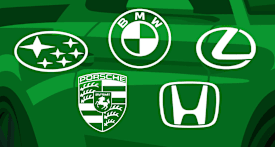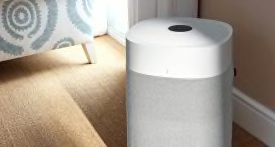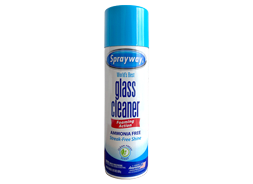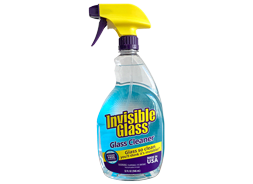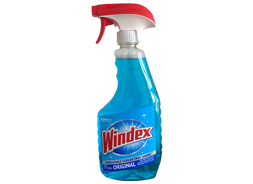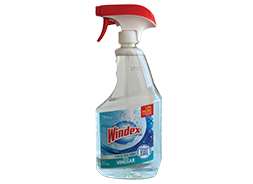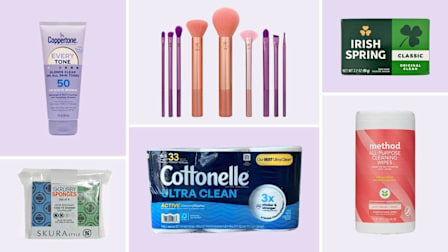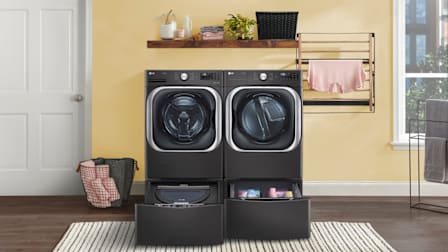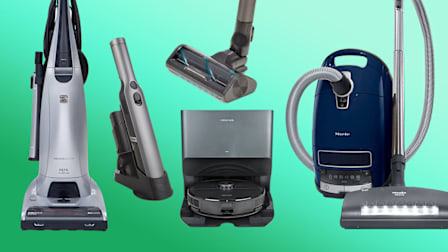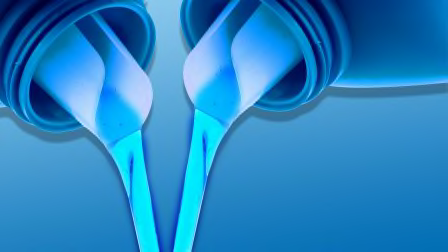Best Glass Cleaners
We evaluated eight popular glass cleaners from brands including Sprayway, Windex, and Zep
When you shop through retailer links on our site, we may earn affiliate commissions. 100% of the fees we collect are used to support our nonprofit mission. Learn more.
The bathroom mirror. Bedroom windows. Or that glass table in the center of the living room. Glass surfaces are all around our homes. Often, it can feel like glass is a debris magnet, too, with fresh fingerprints, bits of toothpaste, water spots, and dust seeming to coat glass mere moments after cleaning. The solution? A great glass cleaner, which can leave surfaces sparkling while repelling future grime.
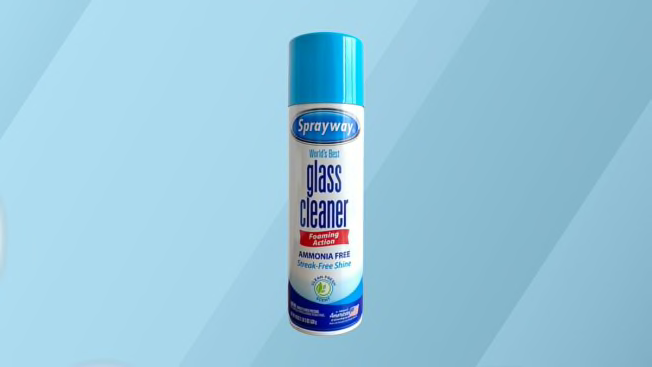
While all the glass cleaners we tested performed well on mirrors and windows, we selected Sprayway’s foaming glass cleaner as our favorite because of its additional functionality as a chrome, tile, and porcelain cleaner. The ammonia-free formula easily cut through all our messes, leaving surfaces instantly dry after a single wipe with a microfiber cloth. Of the eight products we tested, it was the quickest to dry on mirrors and windows. This foaming formula also clung to the surfaces it was sprayed on, so there was no need to rush to wipe. That makes it less of a hassle than most liquid glass cleaners, where I had to work quickly to avoid cleaner dripping.
According to the manufacturer, the label includes thorough safety notices, and the entire can (including the cap) is recyclable.
Because the can is opaque, it’s not possible to tell when the glass cleaner is running low. The smell can be a bit unpleasant, so I recommend using it in a well-ventilated area with open windows.
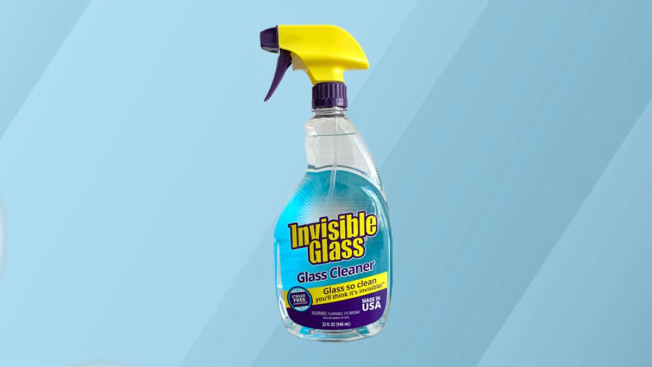
Invisible Glass is another multitasking, ammonia-free product that left our test mirrors and windows shiny and streak-free. The label does not include a list of surfaces on which the product is safe to use, but the product site says it can be used on glass in your home, office, or vehicle. I used it to clean tinted car windows and a glass stovetop, too, and found that it worked well on both.
First-aid instructions and safety warnings are printed clearly on the label.

Arguably the most well-known name in glass cleaning, Windex is popular for good reason. The brand’s Original cleaner left mirrors, windows, stovetops, and glass shower doors spotless in our testing. Additionally, it can be used to clean glass tables, glass picture frames, doors, and even microwave doors, making it one of the most versatile glass cleaners we tested. The product site features a full list of surfaces that Windex recommends you clean with this glass cleaner. Because it has ammonia in its formula, it should not be used on tinted windows or other surfaces that can be damaged by ammonia, such as wood, or on natural stone countertops (marble, quartz, granite).
The label had directions and the children’s safety warning printed in both English and Spanish. However, reading the label through the blue liquid cleaner was a bit difficult.
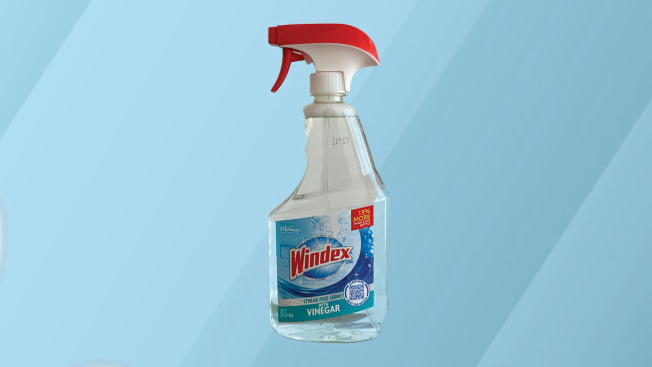
The vinegar-based version of Windex’s glass cleaner performed just as well as the original, clearing mirrors and windows of toothpaste, oily messes, and lipstick stains completely. After wiping away toothpaste from my bathroom mirror, I didn’t have to do any extra buffing to leave the surface looking pristine. Ditto for the oily fingerprints on the windows—no residue left behind each time. On other glass surfaces around the home, like a glass stovetop and shower door, it performed as well as the other glass cleaners we tested on these surfaces. I was relieved to find that there was no harsh chemical scent or lingering vinegar smell. Instead, a light, floral scent was left behind on freshly cleaned surfaces.
The cleaner’s label isn’t very specific: It only says the product can be used on glass and mirrors, but according to the brand’s site, you can safely use it to clean glass stovetops, shower doors, tables, picture frames, and home decor. Like with the original Windex glass cleaner, the instructions and safety warnings on the label are printed both in English and Spanish. The label is easier to read than the one on the original blue cleaner, thanks to its color-less formula. It’s also ammonia-free, so cleaning glass surfaces near surfaces that can be damaged by ammonia shouldn’t be an issue.
Other Glass Cleaners We Tested

Ammonia-based Zep cleaned my mirrors and windows well, but it isn’t as clear as others about which surfaces it can be used to clean. On the label, the brand says windows, mirrors, and other glass surfaces are okay, but the product site more broadly recommends the cleaner for “nearly every surface of the home.”
The label has comprehensive safety warnings and first-aid instructions in case the product is inhaled, ingested, or comes into contact with your eyes. While the directions are printed only in English, there is a small note in Spanish asking users to refrain from using the glass cleaner until they have thoroughly read the label.

Hope’s Perfect Glass Cleaner ammonia-free formula had no trouble cleaning my mirrors and windows, but its lackluster safety labeling kept it out of our top picks. The only safety disclaimer on the label is “Keep out of reach of children,” with no instructions for what to do if the cleaner gets in your eyes, is inhaled, or is swallowed. The short description of what each ingredient in the cleaner’s formula does is a helpful feature we didn’t see on any of the other glass cleaners we tested.
The manufacturer says Hope’s can also be used to clean phone screens, but I opted out of trying this for myself because Apple doesn’t recommend using any cleaning products on its phones (unless you’re disinfecting with an alcohol or Clorox wipe). The formula does not contain ammonia, and the manufacturer recommends using paper towels to wipe surfaces after spraying—a suggestion different from most other glass cleaners, whose manufacturers recommend using a microfiber or cotton cloth. Like the Sprayway glass cleaner, Hope’s bottle isn’t transparent, so it’s hard to tell when you are running low.
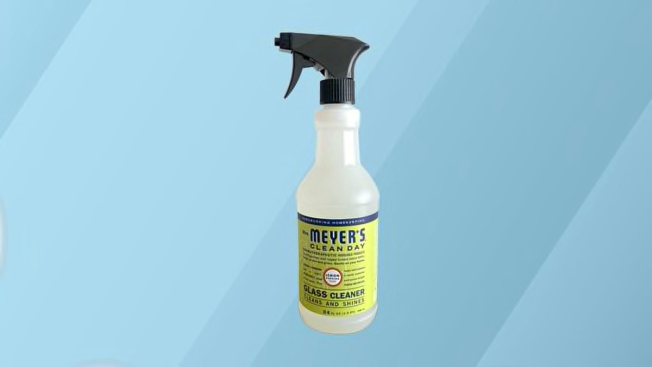
No other glass cleaner had a scent that came close to the lemon verbena scent of this glass cleaner from Mrs. Meyer’s. It was so subtle and pleasant, my first thought was how I’d love a candle with the scent burning in my bathroom at all times. Though it is ammonia-free and touted as a greener cleaning product, it had the longest ingredient list of any of the glass cleaners I tested.
The label has no safety warnings—not even the “keep out of reach of children” that other cleaners with less-than-ideal safety labeling had. Even with more “natural” ammonia-free formulas, all cleaning products should be kept away from children and pets. The manufacturer doesn’t recommend using this cleaner on surfaces other than mirrors and glass.
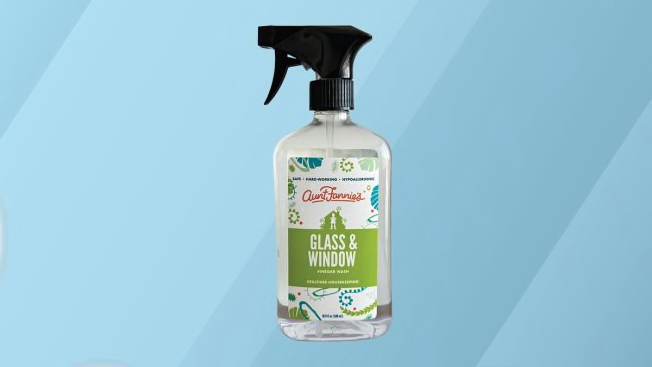
This vinegar-based glass cleaner from Aunt Fannie’s left much to be desired in our evaluations. On lipstick-removal duty, it left behind about half of the stain on my living room window after the standard two wipes with a microfiber cloth. Similarly in the bathroom, toothpaste required more wiping and a significant amount of pressure to remove toothpaste stains from a mirror. Even after 10 wipes (the most wipes required of any of the glass cleaners we evaluated), there were still some small toothpaste streaks left behind. With enough elbow grease, it did get all of the glass surfaces clean, but it wasn’t among the top performers in any of our evaluations. After each spray, I noticed a few drops of the glass cleaner dripping from the bottle’s nozzle, so I had to wipe up bits of product from the floor or windowsill each time I used this cleaner.
If a lingering vinegar scent is not your cup of tea, steer clear of this glass cleaner. I could still smell the scent from this vinegar-based cleaner about 25 minutes after I cleaned the windows and mirrors in my apartment. If you can look past the scent, this cleaner can also be used to clean light fixtures, chrome, and stainless steel surfaces, according to the manufacturer’s website.
1:10 Vinegar and Water Solution
Distilled white vinegar, a popular cleaning ingredient, is another commonly used glass cleaner. I prepared a 1:10 solution of white vinegar and water, and tested it against the same messes as the eight glass cleaners. While it removed lipstick, oily fingerprints, and toothpaste just as well as the dedicated glass cleaners, it left a noticeable amount of streaks behind. As versatile of an ingredient as it is, it isn’t our first choice for mirror cleaning, and you shouldn’t reach for vinegar to clean every surface in your home.
What to Consider When Shopping for a Glass Cleaner
When choosing a glass cleaner to take care of the toothpaste remnants, lipstick stains, and other debris typically found across glass surfaces, windows, and mirrors, there are a couple of factors to consider.
Ammonia vs. ammonia-free: Ammonia is a common ingredient found in glass cleaners. In our tests, we found that the ammonia-free glass cleaners we tested cleaned just as well as the products containing ammonia (but the latter tend to smell).
Both of the glass cleaners we tested with ammonia in their list of ingredients cautioned against using these cleaners on tinted windows, and while you should never mix any cleaning products together, it’s even more important to avoid mixing ammonia-based products with other cleaning products that may contain bleach because the fumes produced by this mixture are toxic.
Surfaces to be cleaned: As a general rule, you should use glass cleaners only on the surfaces that the brand clearly states they are safe to use on. All the glass cleaners we tested were safe to use on non-tinted windows and mirrors. If a manufacturer described its product as safe to use on glass stovetops, glass shower doors, and tinted car windows, we tested that product on those additional surfaces.
It is always safest to use a cleaning product that has been specifically formulated to clean a certain surface, such as a stove cleaner to clean a stovetop. When in doubt, reach out to the manufacturer to find out whether a product is safe to use on a surface that is not listed on the label.
How CR Tested Glass Cleaners
To test glass cleaners at home, I applied toothpaste, oily fingerprints, a mixture of margarine and flour, and bright red lipstick to bathroom mirrors and living room windows. After spraying glass cleaner on each surface, I used a clean microfiber cloth to wipe away the cleaner and debris, counting the number of wipes necessary to completely rid the surface of messes. The glass cleaners labeled for use on additional surfaces, such as glass stovetops, glass shower doors, and tinted car windows, were also tested on those surfaces against oily fingerprints, soap scum, and general car window debris.
I also carefully reviewed each product’s label for appropriate safety notices and clear directions. And I recorded notes on scent, ingredients, and how easy each product is to dispense.
@consumerreports Watch this before using your glass cleaner as a multi-surface cleaner—and see the best glass cleaners through the link in our bio. #cleantok #cleaningtiktok #cleaning #glasscleaner #windowcleaning
♬ original sound - Consumer Reports

